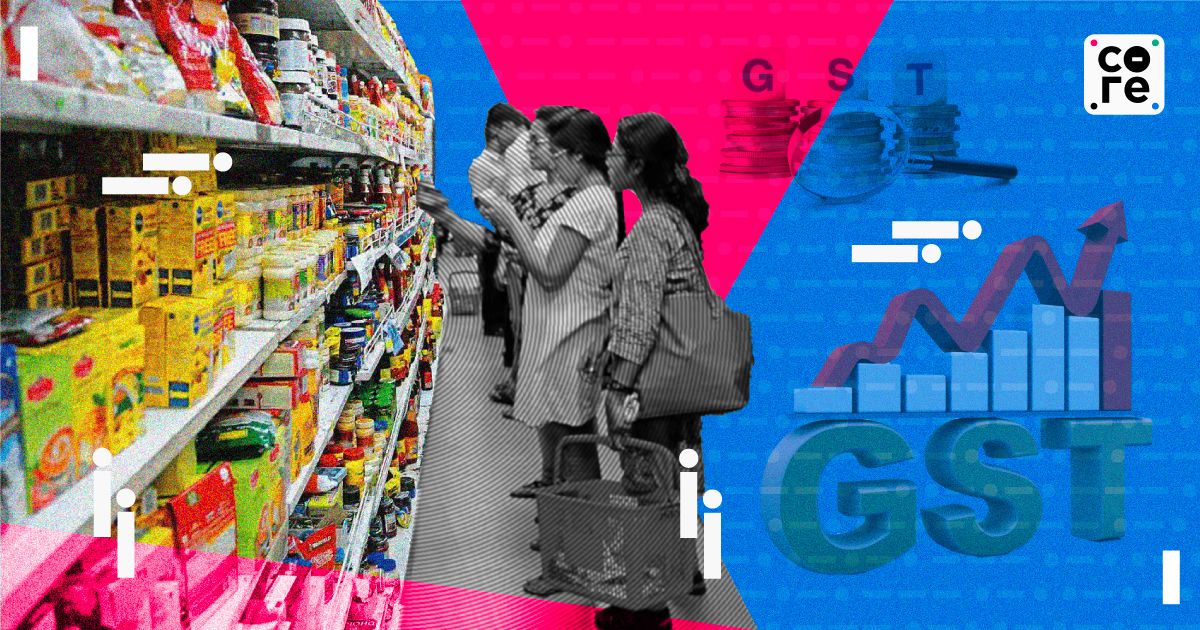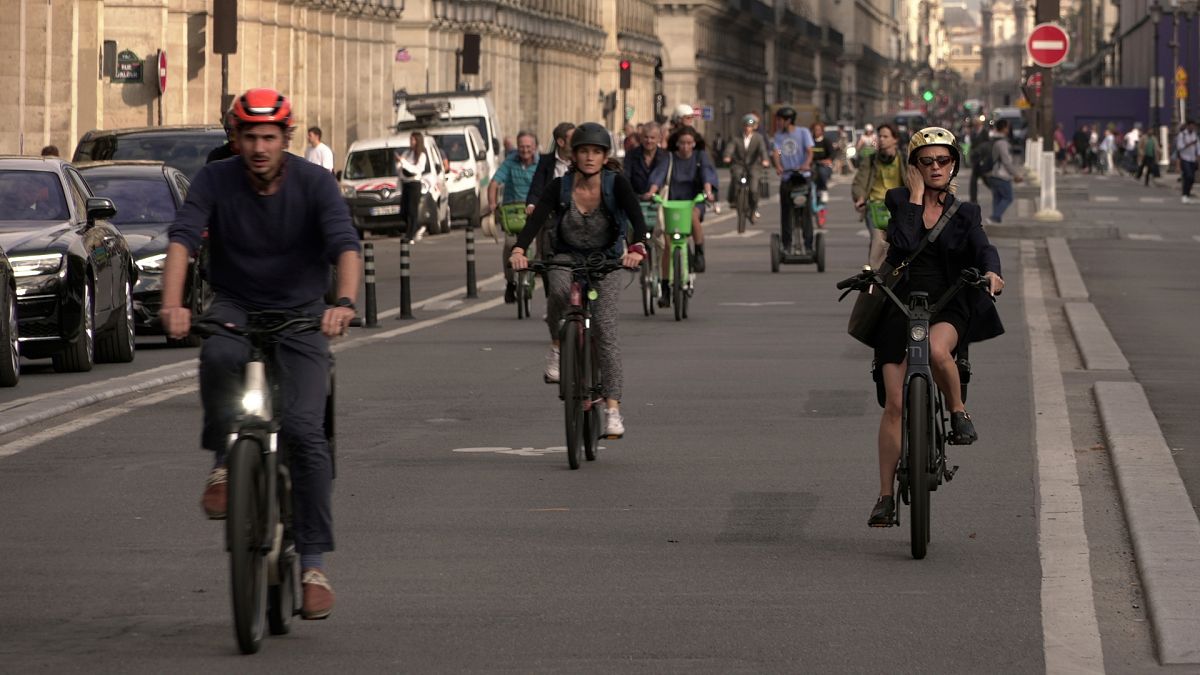- Arvind's Newsletter
- Posts
- Arvind's Newsletter
Arvind's Newsletter
Issue No #1093
1.NIIF eyes $1 billion for second Private Markets Fund, reports Economic Times
India's quasi-sovereign National Investment and Infrastructure Fund Ltd (NIIF) is set to raise about $1 billion for its second Private Markets Fund (PMF), said people aware of the development. PMF-II will back India-focused private equity and venture capital funds.
NIIF, which launched the fundraising process early this year, is expected to make a first closure of about $550 million in a few months. The government of India, which owns about 49% of NIIF, will be the largest contributor to PMF-II.
The Asian Infrastructure Investment Bank (AIIB), which backed the first PMF, is likely to invest about $125 million in the second one.
2.State GST Data Could Give Us Insights On Consumption: New CRISIL report as reported in CORE
A new exploratory report by CRISIL says private consumption is the biggest demand driver for the Indian economy and understanding how it stacks up across states is helpful for the corporate sector as well as for policymakers.CRISIL analysed GST data for 17 states that account for 95% of total GST collection. Maharashtra leads with a 20% GST collection for all India followed by Karnataka.
The report found that per capita GST (proxy for per capita consumption expenditure) increases with the rise in per capita income. Interestingly, when it comes to GST collections, growth is not dependent on whether a state is a higher or a lower per-capita income state. In other words, there is not much variation in GST growth across states.
“Almost all states have witnessed growth in GST collections on the average between 12% to 16%. Year-to-year numbers could vary. And this is largely because I think GST was introduced at the same time across India. So whether it's a rich state or a poor state, everybody has seen the growth in GST collections,” Joshi said.
According to the report, GST growth during the five years (between fiscal 2020 and fiscal 2024) in Telangana (the highest per capita income state in the report’s sample) stood at 14.7%, not much different from 15.6% growth in Bihar (lowest per capita income state. This trend likely indicates a similar pace of adoption of GST across states, irrespective of their income levels.
Since the introduction of GST in 2017, there have been many initial glitches. However, over the last two years, as these issues have been addressed and the system streamlined, the revenue story of GST is starting to unfold. According to Joshi, this trend mirrors many reforms where initial challenges give way to long-term benefits. Additionally, recent data shows that GST collections have exceeded nominal GDP growth, indicating a faster rate of expansion.
“What we also find is that GST introduction has had a positive spillover impact on the income tax collections because once you are in the GST net, I think it becomes difficult to cheat on taxes to put it very bluntly, and we have seen that income tax collections in 2324 have grown by something like 20%,” Joshi said.
3.Dubai received the heaviest rain it has ever recorded, flooding major highways and closing the airport, among the world’s busiest.
Nearly six inches of rain fell in 24 hours from Monday evening, around 1.5 times the country’s average annual rainfall. Dubai is — for obvious reasons — not prepared for heavy rain, with roads lacking drainage, so schools and the metro system also shut. Lightning repeatedly struck the Burj Khalifa, the world’s tallest building. At least one person died, and another 18 were killed in neighbouring Oman.
A couple told The Associated Press that the situation at the airport, where runways were underwater, was “absolute carnagE … There’s people sleeping in the Metro station. There’s people sleeping in the airport.” Planes are being diverted to other regional airports.
4.The rise and rise of DINKS
The DINKs—Double Income No Kids—have crystallised into the core of our cultural blueprint. They're the couples, dual earners, deliberately sidestepping parenthood. Their numbers are swelling. By the year 2022, childless households in the U.S. hit 43%, a jump from 36% a decade earlier. It's a surge pushing toward 50%. Advertisers salivate, targeting this burgeoning demographic, a ripple effect of the pervasive baby bust.
This isn’t just a United States issue. Every developed country is going through the same process. Birth rates are falling below replacement everywhere.
No one really knows why birth rates are dropping so fast. Once a country reaches a certain level of economic development, fertility rates tend to fall below the level needed to maintain the population, 2.1 children per woman.
Many people have theories but if you critically examine them they fall apart.
1) People do not have money for kids. This is usually the first argument people make. But the world today is richer than it has ever been before. DINKs are not a money issue. These people can afford children. In fact, DINKs tend to be richer than the average American.
2. The Government isn’t Providing pro-natal policies. While this maybe is true of America, this is not not correct for other countries. There are a number of countries whose governments have offered cash bonuses, tax breaks, paid leave and other benefits to convince people to have more kids. Almost always, the result is the same: The numbers barely budge. It’s very expensive, and nations aren’t even getting back to replacement level rate of population with births.
3) This is happening only in societies that are not religious. Countries like Russia or Poland with more religious christians are having the same problem. Even the Pope is begging Catholics to have more kids. In Islamic countries, the same thing is happening. In Bangladesh TFR fell from 5 to 2 in 20 years. It’s still dropping. In the Islamic Republic of Iran it is below 2.
4)Women are working and not having kids. Another argument is that women are working and do not have time to have kids. I’m not sure that is the issue either. Take a look at Switzerland. The TFR is 1.4 and
only 56% of women work full time. Many choose to work only part time while their husband or boyfriend works full time.
5.The percentage of journeys in central Paris made using a bike, compared to 4.3% by car.
Walking and public transport remain the most popular modes of transport for Parisians, but cycling has jumped significantly, up from 3% in 2010 . The city has cracked down on car journeys — pedestrianising streets, increasing parking charges, and banning polluting vehicles — while boosting cycle infrastructure. Notably, in 2007 the city introduced the Vélib bikeshare system, which inspired similar programs in London and New York.
6.A gas power station in Southern California is being replaced with the U.S.’s second-biggest battery plant.
The plant’s twin smokestacks dominated the skyline in Menifee until it was decommissioned last year: California’s power is being increasingly provided by renewables, and the plant’s 12-hour startup time made it unhelpful as an occasional backup. The new battery farm, built in less than a year, will hold enough juice to power 680,000 homes for four hours, maintaining “grid reliability in the face of all of these intermittent renewables,” an energy manager told Canary Media. California leads the nation in battery capacity, although Texas, with its vast solar infrastructure, is on course to overtake it.
7.NYT to soon offer most articles via automated voice
The New York Times plans to make the vast majority of its articles available to users as narrations read via an automated voice, executives tell Axios.
The move will help position the Times as one of the biggest audio news companies globally.
The company published 2,300 audio recordings, including podcasts, in 2023 with more than 600 Times reporters contributing.
Its podcasts were downloaded nearly 1 million times last year. The Times' flagship podcast, "The Daily," is the most popular news podcast on Spotify
The NYT Audio app reached over 1 million downloads in 2023.
Beginning this week, 10% of NYT website, news app and audio app users will get access to the new automated voice narrations, says Stephanie Preiss, senior vice president and general manager of audio and TV at the Times.
Narrations will be available on 75% of article pages that the Times publishes articles to start, with plans to eventually expand the feature to all published articles and all app users.
8.The rights and wrongs of assisted dying, The Economist
Britain has become a much more liberal country in recent decades. In 1981 only 12% of Britons thought that homosexuality was justifiable, according to the World Values Survey; in 2022 the figure was 66%. Over the same period the proportion of people who were accepting of divorce rose from 18% to 64%. Where the public has led, politicians have followed: same-sex marriages were legalised in 2013; no-fault divorces became possible in 2022. That pattern may well be about to repeat itself with assisted dying.
Over two-thirds of Britons support changing the law to let someone help in the suicide of a person with a terminal illness. Assisted dying has a good chance of getting on the statute book in the near future. Bills are already in progress on the Isle of Man, in Jersey and in Scotland. Sir Keir Starmer, the Labour leader, is sympathetic and has promised a free vote among MPs if his party wins the next general election.
Take concerns about coercion. Critics argue that no regime could ever fully protect the vulnerable from relatives looking to claim an inheritance, or indeed from a state seeking to cut health-care costs. Yet the evidence suggests that cases of coercion are extremely rare. The state should do its best to help people live well, whether through social support or palliative care, but if it cannot, those who truly wish to die should not be obliged to suffer. In places where an assisted death remains illegal, only those with money have the option to take matters into their own hands—on average one Briton a week travels to Switzerland to end their life there. The rights of hypothetically vulnerable patients are taking precedence over the rights of those who are actually in anguish.
Some critics say that assisted dying is a “slippery slope”. If this is the fundamental reason for your opposition, you are pretty much conceding the principle that there are indeed instances when it would be right to help someone die—it’s the scope that is the problem. In any case experience suggests that no such slope exists. Although eligibility criteria for an assisted death have expanded in Belgium and the Netherlands, they have never done so in jurisdictions whose initial laws were restricted to terminally ill adults. Canada’s decision to postpone the extension of assisted-dying laws to the mentally ill until 2027 shows that it is possible to press “pause”. True, the numbers of people seeking assisted deaths is increasing: they now make up 4% of all deaths in Canada and 5% in the Netherlands. Yet if those higher figures are an expression of people’s desire to make use of a new freed
The Economist had a vote, it would be unequivocally in favour. The case for assisted dying is, at its core, one of individual freedom. Britons have the right to marry whom they want. They have the right to roam. Through an obscure medieval law, some even have the right to drive sheep across London Bridge. They should have the right to choose the manner and timing of their death. The more complex question is what form an assisted-dying regime should take. That is not just to ensure safeguards against abuses, though it must undoubtedly do that. It is also to make sure that the law is not drawn too tightly.
Britain is in many ways late to the issue (as are countries like Ireland and France; a bill was presented to the French cabinet this week). Belgium, the Netherlands, Oregon and Switzerland have had assisted-dying laws for decades. Seventeen jurisdictions have passed laws since we argued in favour of legalisation in 2015. Although opponents of assisted dying have deeply held beliefs, and raise legitimate concerns, the actual experience of these many jurisdictions strengthens the arguments in its favour.
Take concerns about coercion. Critics argue that no regime could ever fully protect the vulnerable from relatives looking to claim an inheritance, or indeed from a state seeking to cut health-care costs. Yet the evidence suggests that cases of coercion are extremely rare. The state should do its best to help people live well, whether through social support or palliative care, but if it cannot, those who truly wish to die should not be obliged to suffer. In places where an assisted death remains illegal, only those with money have the option to take matters into their own hands—on average one Briton a week travels to Switzerland to end their life there. The rights of hypothetically vulnerable patients are taking precedence over the rights of those who are actually in anguish.
Some critics say that assisted dying is a “slippery slope”. If this is the fundamental reason for your opposition, you are pretty much conceding the principle that there are indeed instances when it would be right to help someone die—it’s the scope that is the problem. In any case experience suggests that no such slope exists. Although eligibility criteria for an assisted death have expanded in Belgium and the Netherlands, they have never done so in jurisdictions whose initial laws were restricted to terminally ill adults. Canada’s decision to postpone the extension of assisted-dying laws to the mentally ill until 2027 shows that it is possible to press “pause”. True, the numbers of people seeking assisted deaths is increasing: they now make up 4% of all deaths in Canada and 5% in the Netherlands. Yet if those higher figures are an expression of people’s desire to make use of a new freedom, as is overwhelmingly likely, they are a reason to pass laws, not to block them.
Whether out of conviction or caution, politicians tend to respond to such concerns by writing laws that are based on Oregon’s model, which requires a person to be terminally ill with less than six months to live to be eligible for an assisted death. This is the approach being followed in Ireland. France’s assisted-dying bill is also limited to the terminally ill, even though a citizens’ assembly convened by President Emmanuel Macron supported a broader law for those suffering unbearably from an incurable illness. The Oregon template is also likely to be the one MPS in Westminster will eventually end up debating, if previous bills are a guide. It is too restrictive.
Strict time constraints mean that people often die before they can receive the lethal medication. And many people suffer terribly with a disease that is not terminal. Canada’s model, which allows someone to determine for themselves whether their suffering is unbearable, is fairer. A person there must be suffering from a serious and incurable medical condition and must wait 90 days to reflect on their decision. Arguments that this broader scope devalues disabled lives are well-meaning but paternalistic. Three-quarters of Canadians with disabilities support the existing law.
The thorniest issues arise when it is hard to determine whether people are of sound mind. Canada’s decision to postpone the extension of assisted-dying laws to people with mental-health disorders is sensible for this reason. Mental suffering is as real as physical suffering, yet society’s understanding of it is still inadequate. Doctors must be able to tell between a considered, rational wish to die and a suicidal impulse, a distinction many clinicians feel unable to make.
Dementia, which already afflicts one in 11 Britons over 65, is also a difficult area. It is possible for someone in the early stages of dementia to make a request in advance for an assisted death, but their wishes when the time comes should prevail. When in doubt, the best rule of thumb is not to proceed.
There is no guarantee that politicians in Britain will vote in favour of assisted dying. But when they do debate the issue, they should not default to the narrowest definition of what is a basic human right. All adults of sound mind who are enduring unbearable suffering with no prospect of recovery should be able to choose the way they die.





